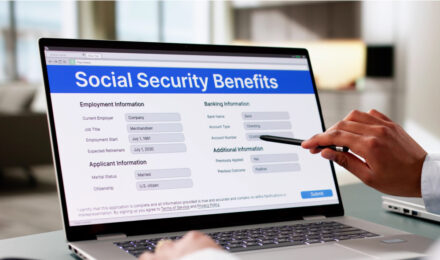Table of Contents
As autumn turns colder, families across the country begin bracing for winter heating bills. For households already struggling to pay rent or buy groceries, those rising costs are overwhelming. Heat is essential, yet it often comes at the expense of other necessities. The good news is that multiple programs exist to help families cover utility bills, prevent shut-offs, and make homes more efficient.
Why Winter Brings Financial Strain
Heating demands increase sharply once temperatures drop. In northern states, energy bills can double between October and January. Families in older homes or drafty apartments often face the highest costs.
The U.S. Energy Information Administration projects heating fuel prices will remain elevated this winter. That means low-income households could spend a disproportionate share of their income on energy. Without support, many risk arrears, utility shut-offs, or even eviction. Programs at the federal, state, and local levels help families avoid those outcomes.
The Low Income Home Energy Assistance Program
The Low Income Home Energy Assistance Program (LIHEAP) is the main source of federal energy aid. It provides grants to states, tribes, and territories to help residents pay heating bills. Funds can cover electricity, natural gas, fuel oil, or propane costs.
Eligibility depends on household income and family size. Priority often goes to seniors, people with disabilities, and families with children. Many states open LIHEAP applications in October, and funds are limited. Submitting early increases the chance of approval.
Payments often go directly to utility companies, reducing arrears or covering upcoming bills. Some households may also qualify for crisis assistance if they receive shut-off notices during winter.
State and Local Energy Relief
In addition to LIHEAP, many states run their own utility support programs. Some cap rates for low-income customers. Others offer one-time grants to clear overdue bills or deposits for reconnection.
Local governments and nonprofits also provide targeted aid. Community action agencies frequently manage both federal and local funds. Churches, charities, and neighborhood organizations may distribute fuel vouchers, space heaters, or small grants. Supplies are limited, so contacting these groups early in the season is essential.
Utility Company Options
Utility providers often run assistance programs of their own. Many offer budget billing, which evens out costs across the year. This prevents large spikes during winter months.
Some companies provide hardship funds, financed by customer donations or corporate giving. These funds may cover a portion of overdue bills for struggling households. Utility companies may also offer payment plans, breaking large balances into smaller installments. Customers should always call providers before bills become overdue. Early communication often prevents disconnections.
Shut-Off Protections
Most states impose restrictions on utility shut-offs during the coldest months. These “winter moratoriums” prevent companies from disconnecting heat when temperatures are dangerously low. Protections often apply automatically to families with children, seniors, or people with medical needs.
However, protections usually expire in spring. Families still owe the balance, and arrears can accumulate quickly. Some states require households to formally enroll in hardship programs to qualify. Knowing local rules is critical. State utility commissions or consumer protection offices provide details.
What Families Need to Apply
To access most assistance programs, households must provide documents proving eligibility. These often include:
- Proof of income for everyone in the home.
- Recent utility bills.
- Identification and Social Security numbers.
- Proof of residence, such as a lease or mortgage statement.
Incomplete applications delay approval. Families should prepare these documents before applying and keep copies for their records.
Weatherization Support
Short-term aid reduces bills temporarily, but weatherization provides lasting savings. The Weatherization Assistance Program (WAP), funded by the Department of Energy, helps improve efficiency in low-income homes. It covers insulation, window sealing, and heating system repairs at no cost to qualifying families.
Upgrades from WAP reduce long-term energy use, which lowers bills year after year. Demand is high, and waitlists can be long. Applying in the fall increases chances of receiving service before winter. Combining WAP with LIHEAP gives both immediate and long-term relief.
Renters and Energy Assistance
Renters often assume they cannot qualify for energy programs, but that is not true. As long as they pay utility bills directly, renters are usually eligible. LIHEAP and many state programs cover tenants in apartments and mobile homes.
Renters may need their landlord’s cooperation for certain programs, especially weatherization upgrades. Property managers may need to provide information about the building or authorize repairs. Renters should not hesitate to ask landlords to support their applications.
Why Timing Matters
Applying in October or early November is crucial. Funds are limited, and demand surges once heating bills arrive in December and January. Families that wait may miss out entirely.
Acting early also provides peace of mind. Once assistance is approved, payments are applied directly to accounts, preventing the stress of looming shut-off notices. Proactive families have more options than those waiting until a crisis hits.
Conclusion
Winter heating costs are unavoidable, but financial hardship does not have to be. Programs like LIHEAP, WAP, and state assistance help families cover bills, improve efficiency, and stay safe. Utility companies also provide payment options and hardship funds.
The key is early action. Families that gather documents and apply in October are more likely to secure support. Renters, homeowners, seniors, and families with children all have options. By taking advantage of these programs now, households can enter winter with confidence that the heat will stay on.
References
1. Low Income Home Energy Assistance Program (LIHEAP). (U.S. Department of Health and Human Services)
2. Weatherization Assistance Program (WAP). (U.S. Department of Energy)
3. Winter Fuels Outlook, 2025. (U.S. Energy Information Administration)
Table of Contents
As autumn turns colder, families across the country begin bracing for winter heating bills. For households already struggling to pay rent or buy groceries, those rising costs are overwhelming. Heat is essential, yet it often comes at the expense of other necessities. The good news is that multiple programs exist to help families cover utility bills, prevent shut-offs, and make homes more efficient.
Why Winter Brings Financial Strain
Heating demands increase sharply once temperatures drop. In northern states, energy bills can double between October and January. Families in older homes or drafty apartments often face the highest costs.
The U.S. Energy Information Administration projects heating fuel prices will remain elevated this winter. That means low-income households could spend a disproportionate share of their income on energy. Without support, many risk arrears, utility shut-offs, or even eviction. Programs at the federal, state, and local levels help families avoid those outcomes.
The Low Income Home Energy Assistance Program
The Low Income Home Energy Assistance Program (LIHEAP) is the main source of federal energy aid. It provides grants to states, tribes, and territories to help residents pay heating bills. Funds can cover electricity, natural gas, fuel oil, or propane costs.
Eligibility depends on household income and family size. Priority often goes to seniors, people with disabilities, and families with children. Many states open LIHEAP applications in October, and funds are limited. Submitting early increases the chance of approval.
Payments often go directly to utility companies, reducing arrears or covering upcoming bills. Some households may also qualify for crisis assistance if they receive shut-off notices during winter.
State and Local Energy Relief
In addition to LIHEAP, many states run their own utility support programs. Some cap rates for low-income customers. Others offer one-time grants to clear overdue bills or deposits for reconnection.
Local governments and nonprofits also provide targeted aid. Community action agencies frequently manage both federal and local funds. Churches, charities, and neighborhood organizations may distribute fuel vouchers, space heaters, or small grants. Supplies are limited, so contacting these groups early in the season is essential.
Utility Company Options
Utility providers often run assistance programs of their own. Many offer budget billing, which evens out costs across the year. This prevents large spikes during winter months.
Some companies provide hardship funds, financed by customer donations or corporate giving. These funds may cover a portion of overdue bills for struggling households. Utility companies may also offer payment plans, breaking large balances into smaller installments. Customers should always call providers before bills become overdue. Early communication often prevents disconnections.
Shut-Off Protections
Most states impose restrictions on utility shut-offs during the coldest months. These “winter moratoriums” prevent companies from disconnecting heat when temperatures are dangerously low. Protections often apply automatically to families with children, seniors, or people with medical needs.
However, protections usually expire in spring. Families still owe the balance, and arrears can accumulate quickly. Some states require households to formally enroll in hardship programs to qualify. Knowing local rules is critical. State utility commissions or consumer protection offices provide details.
What Families Need to Apply
To access most assistance programs, households must provide documents proving eligibility. These often include:
- Proof of income for everyone in the home.
- Recent utility bills.
- Identification and Social Security numbers.
- Proof of residence, such as a lease or mortgage statement.
Incomplete applications delay approval. Families should prepare these documents before applying and keep copies for their records.
Weatherization Support
Short-term aid reduces bills temporarily, but weatherization provides lasting savings. The Weatherization Assistance Program (WAP), funded by the Department of Energy, helps improve efficiency in low-income homes. It covers insulation, window sealing, and heating system repairs at no cost to qualifying families.
Upgrades from WAP reduce long-term energy use, which lowers bills year after year. Demand is high, and waitlists can be long. Applying in the fall increases chances of receiving service before winter. Combining WAP with LIHEAP gives both immediate and long-term relief.
Renters and Energy Assistance
Renters often assume they cannot qualify for energy programs, but that is not true. As long as they pay utility bills directly, renters are usually eligible. LIHEAP and many state programs cover tenants in apartments and mobile homes.
Renters may need their landlord’s cooperation for certain programs, especially weatherization upgrades. Property managers may need to provide information about the building or authorize repairs. Renters should not hesitate to ask landlords to support their applications.
Why Timing Matters
Applying in October or early November is crucial. Funds are limited, and demand surges once heating bills arrive in December and January. Families that wait may miss out entirely.
Acting early also provides peace of mind. Once assistance is approved, payments are applied directly to accounts, preventing the stress of looming shut-off notices. Proactive families have more options than those waiting until a crisis hits.
Conclusion
Winter heating costs are unavoidable, but financial hardship does not have to be. Programs like LIHEAP, WAP, and state assistance help families cover bills, improve efficiency, and stay safe. Utility companies also provide payment options and hardship funds.
The key is early action. Families that gather documents and apply in October are more likely to secure support. Renters, homeowners, seniors, and families with children all have options. By taking advantage of these programs now, households can enter winter with confidence that the heat will stay on.
References
1. Low Income Home Energy Assistance Program (LIHEAP). (U.S. Department of Health and Human Services)
2. Weatherization Assistance Program (WAP). (U.S. Department of Energy)
3. Winter Fuels Outlook, 2025. (U.S. Energy Information Administration)







